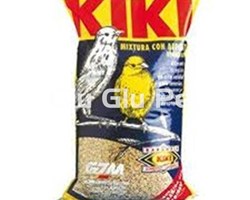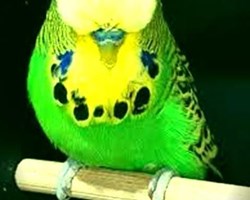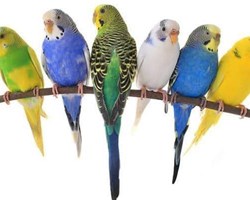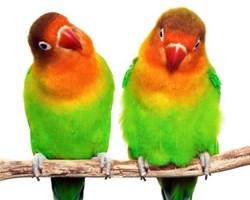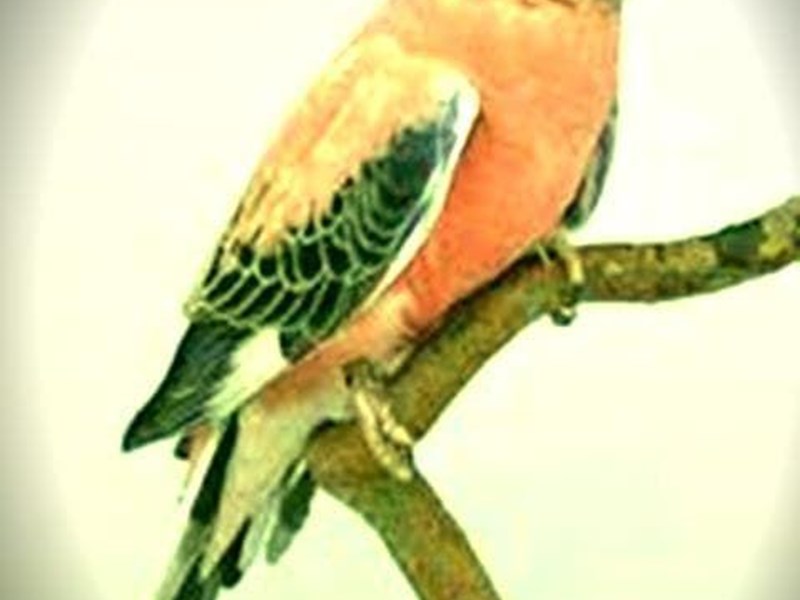
GENERAL ASPECTS OF THE BOURKE'S PARAKETO:
Bourke's parakeet (Neopsephotus bourkii) or pink parakeet belongs to the psittacoid family, like all parrots.
Bourke is pronounced Bœrk, so the correct name would be pronounced like this: Bœrk's Parakeet.
In some areas it is also known by the abbreviated name bourkie (bœrki).
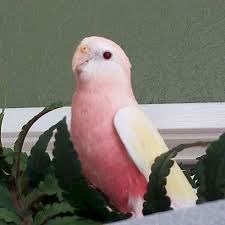
ORIGIN OF THE BOURKE'S PARAKETO:
This bird was discovered in 1835 and was named after Irish General Richard Bourke, who was then governor of an Australian colony.
Its natural habitat, like the nymphs, is in the interior of Australia, in dry steppes with bushes.
It incubates its young in holes in trees that are not very tall, preferably in acacias.
In the wild, Bourke's parakeets live in pairs or in groups of 20-30.
They look for food exclusively on the ground and this is made up of seeds of grasses, other plants and insects.
This type of feeding should be taken into account when having a Bourke's parakeet at home.
APPEARANCE OF THE BOURKE'S PARAKEET:
The most characteristic of this bird is the brownish-pink color of the belly and the blue of the back.
The rest of the plumage is usually grayish brown.
The colors are rather pale and look like pastel shades.
In this way, it is better camouflaged in its natural environment.
As with many other bird species, there are also Bourke's parakeets in other colors, which are mutations: tan, yellow (fawn), pink (opal), and lutino.
In lutinos, the Bourke's parakeet's head, neck, and belly are pale pink.
The elytra and the back are yellow and the eyes are red.
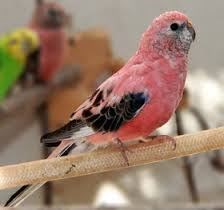
BEHAVIOR OF THE BOURKE'S PARAKETO:
The Bourke's parakeet is, in general, friendly, peaceful and serene.
This is also reflected in their singing, which is very calm.
Since it is a twilight bird, it is somewhat more active at dawn and dusk.
It is less active and nervous than other species and less fearful than the parakeet.
Since he can entertain himself wonderfully, he does not require many hobbies.
Their possession is as easy as that of parakeets or nymphs.
It's not that playful, it doesn't learn tricks and you can only get it to come to your hand and eat from it with a lot of patience and confidence.

THE DIFFERENCE BETWEEN THE BOURKE'S PARAKEET AND THE BUDGEGAR:
This bird is also called rosy parakeet because it is brownish pink from chest to belly, especially the males. For this reason, it is often mistaken for a red parakeet.
These two birds are different genera of the same subfamily.
Although Bourke's parakeet was long classified in the genus Neophema, it later got its own: Neopsephotus.
Bourke's parakeet, Neopsephotus bourkii, is a subspecies of this genus.
It is generally calmer and less playful than the parakeet and its song is pleasant and not noisy.
Compared to the parakeet, it is a very crepuscular bird, even at night with a full moon, when it spends more time on the ground.
DIFFERENCES BETWEEN THE MALE AND THE FEMALE:
Females have smaller heads and bills and are duller in color.
They do not have blue foreheads or flight feathers.
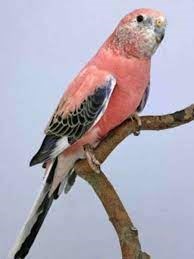
CARE OF BOURKE'S PARAKETO:
If you have enough space, you can keep multiple Bourke's parakeets or keep them with other birds.
In general, the Bourke's parakeet gets along well with other species.
If you have it at home, make sure the cage has the right dimensions and the conditions are correct.
An indoor birdhouse is better than a cage.
Cage size for two specimens: 120 x 100 x 60 cm (W x H x D) minimum.
Aviary for free flight: minimum area of 2 m²
- Optimum temperature range: approx. 18-25°C.
- Quiet location: no additional noise or stimuli.
- With artificial lighting: take into account the twilight phase.
- Daily cleaning: clean the feeders and drinkers, and remove the fresh food.
- Weekly cleaning: comprehensive cleaning of the cage and renewal of the substrate.
- Important: Free flight daily, at least one hour.
- Avoid: sudden changes in temperature and drafts.
- The cage should preferably be longer than it is tall. Please make sure that the length of the cage for a couple is not less than one meter. One or two sides of the cage should be opaque so that the birds feel protected.
HOW SHOULD THE CAGE BE LIKE FOR THE BOURKE'S PARAKETO:
The cage or the aviary should have many branches of natural wood.
The litter can be bird litter and beech wood pellets.
These birds love to jump from stick to stick, so you'll need to lay out enough wooden sticks.
Also, they really like stairs and toys.
Mirrors, plastic birds, and small swallowable parts are not suitable hobbies.
These birds tend to be fat and need to fly freely.
At Glu Glu Pet we advise you to let them fly for several hours, if possible in their own room or an aviary for free flight.
By nature, the Bourke's parakeet loves to bathe.
Therefore, make sure that it always has a bathtub and you will see how much fun you have watching how it splashes.
The water should always be fresh and clean.
Try freshening it up with a drizzle shower with a sprayer that sprays fine water.
Pay close attention to their reaction, as some people love it, others don't.
Never spray water directly into the animal's eyes.
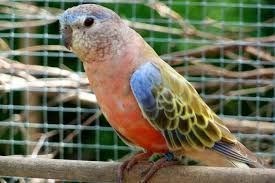
BOURKE'S PARAKEETS CAN BE IN AN OUTDOOR AVIARY:
Outdoor birdhouses are practical, especially if you don't have a lot of space at home.
Unlike other species, the Bourke's parakeet can be in an outdoor aviary all year round.
Provide a sheltered room that protects it from frost and warms it in winter.
The temperature in this room should never be below 10°C.
BOURKE'S PARAKEET NUTRITION:
In the wild, it eats mostly lean grass seeds, so its diet should be low in fat.
It can be said that the feeding of the Bourke's parakeet is identical to that of the parakeet.
As granivorous birds, the basis of their diet is made up of grains.
A good diet for Bourke's parakeets includes:
- At least 50% of the grains from different millet seeds.
- 25% canary seed.
- 5% oat grains.
- Prepared food: you can give it prepared mixtures for lovebirds.
- Additional vitamin concentrate feed.
- From time to time: fresh food in the form of fruit, vegetables (caution: avocado is toxic to birds) and forage (herbs, such as chickweed and dandelion).
- Mineral/Mineral Stone Mixtures: Different minerals, such as limestone or cuttlefish.
- Fresh water daily.
- You can mix the bird food yourself or buy low-fat mixes prepared at Glu Glu Pet, such as the mixes for lovebirds. Give the food to the pink parakeet always on the floor of the aviary. As a daily ration, two slightly heaping teaspoons per bird is sufficient.
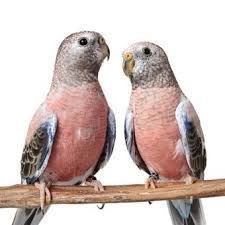
Other articles that might interest you:
- What you need for your parakeet.
Products that we recommend from Glu Glu Pet for your English parakeet:
- Biozoo parakeet fruit bars.
- Honey bars for parakeets Biozoo.
- Cuttlefish bone for birds.
- Anima Strath fortifying supplement.
- MEN FOR SAN INSECTICIDE BIRDS.

